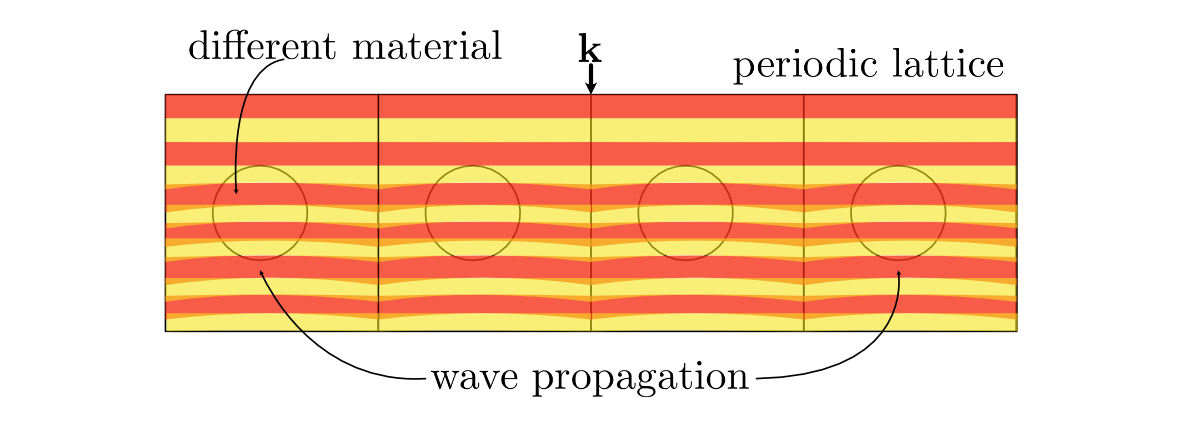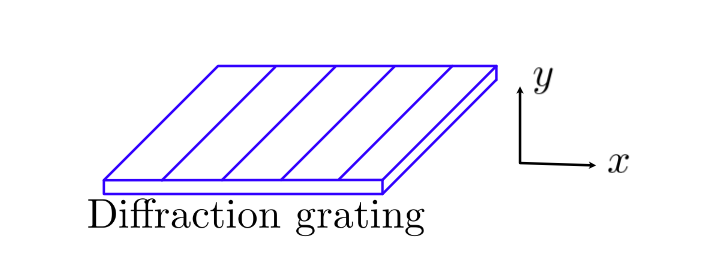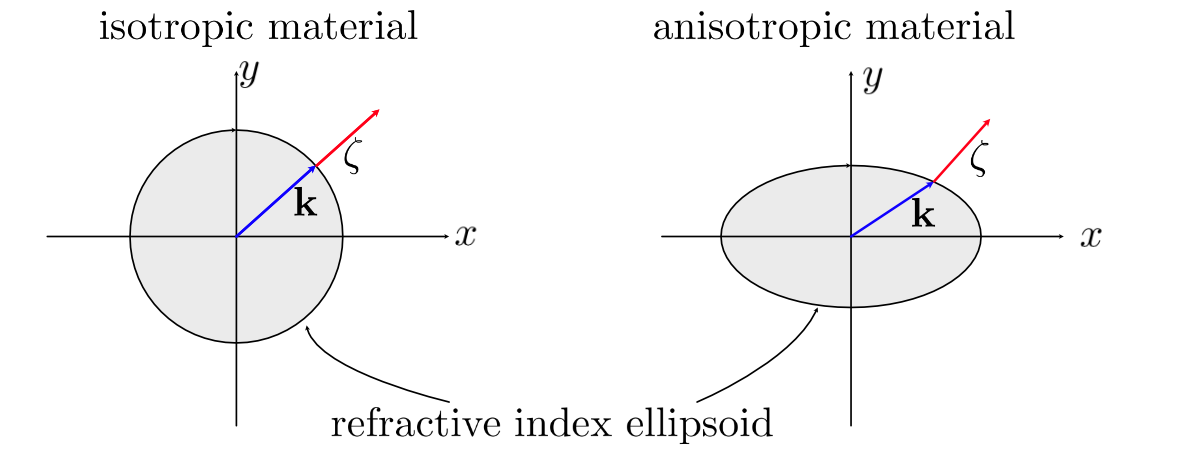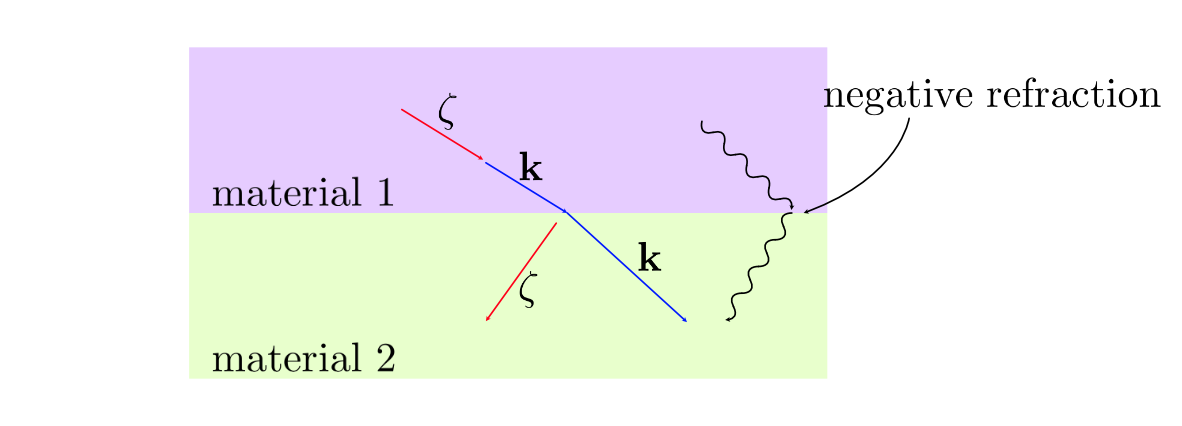Brief description on Bloch theorem
Published:
Bloch wave
Waves propagating in the periodic structure takes on the symmetry and periodicity of the medium or the host.

Bloch theorem
The propagation of wave inside periodic structure are analogous to plane wave, and the envelop function \(u(\mathbf{r})\) takes in the effects of periodicity and symmetry within the structure.
\[\psi(\mathbf{r})=\mathrm{e}^{\mathrm{i} \mathbf{k} \cdot \mathbf{r}} u(\mathbf{r})\]where, \(\psi(\mathbf{r})\) is the overall field {combination of plane wave and periodic function}
\(\mathrm{e}^{\mathrm{i} \mathbf{k} \cdot \mathbf{r}}\) is the plane wave {Bloch wave vector}
\(u(\mathbf{r})\) is the envelop function {takes the periodicity and symmetry of the periodic structure}
Periodicity
A structure is considered periodic, if it’s material properties repeat after certain intervals.
\[\varepsilon( \mathbf{r} + \mathbf{t_{pqr}} ) = \varepsilon (\mathbf{r})\]where, \(\mathbf {t_{pqr}}\) is the periodicity of the structure.
\(\mathbf{\varepsilon}\) is the permittivity of the material.
Amplitude \(A\) of the Bloch wave will have the same periodicity as the structure, where wave is propagating.
\[A( \mathbf{r} + \mathbf{t_{pqr}} ) = A (\mathbf{r})\]Example : Diffraction grating (periodic in one direction)
\[\varepsilon( \mathbf{x} + \mathbf{\Lambda_{pqr}} ) = \varepsilon (\mathbf{x})\]
Band diagram
Plot between the normalized frequencies (eigen values) and the Bloch wave vector \(\mathbf{\beta}\) .

Steps -
- take small step around the irreducible brillouin zone (IBZ)
- compute the eigen values at each step
- plot eigen values as a function of \(\beta\)

Moving horizontally in X-axis, the periodicity and the direction of the wave propagation changes.
Five properties that can be estimated from band diagram -
- Band gap - abscence of any band within a range of frequencies.
- Transmission / reflection spectra - bandgap leads to suppressed transmission and enhanced reflection.
- Phase velocity
- Group velocity
- Dispersion
Full band diagram is 3D
Phase v/s Power flow -

- Phase propagates in the direction of \(\mathbf k\).
- Power propagates in the direction of the poynting vector \(\mathbf{\zeta}\) , which is normal to the surface of the index ellipsoid.
Example - self collimation, where wave is forced to move straight (in the direction of the power \(\mathbf{\zeta}\) )
negative refractive index

Reference - EMPossible
